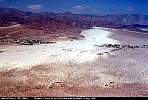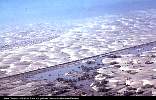Atypical Riparian Communities:
Xeroriparian Habitats
"Dry Wetlands"?! Desert ecologists include the vegetation in washes (arroyos) as "dry riparian" habitats. Though they may carry water only a few hours a year or even less, they share most of their defining characteristics with traditional wet riparian habitats. They are chronically disturbed, unstable sites where water and nutrients are harvested and concentrated from larger areas (watersheds). Like wet rivers, washes are corridors for dispersal of plants and animals that need more water than the surrounding habitat.
 awash01.jpg 49.60 Kb |
 awash02.jpg 76.95 Kb |
 awash03.jpg 70.22 Kb |
 awash04.jpg 67.33 Kb |
 awash05.jpg 47.73 Kb |
 awash06.jpg 59.22 Kb |
 awash10.jpg 47.93 Kb |
 LCVPaloVerdeMts01.jpg 246.02 Kb |
 temp01.jpg 42.02 Kb |
 temp02.jpg 99.36 Kb |
 temp03.jpg 45.88 Kb |
 zdune01.jpg 44.94 Kb |
 zdune02.jpg 46.58 Kb |
 zdune03.jpg 58.67 Kb |
 zdune04.jpg 56.38 Kb |
 zdune05.jpg 28.33 Kb |
 zdune06.jpg 18.05 Kb |
 zdune07.jpg 53.49 Kb |
Page 1 of 1